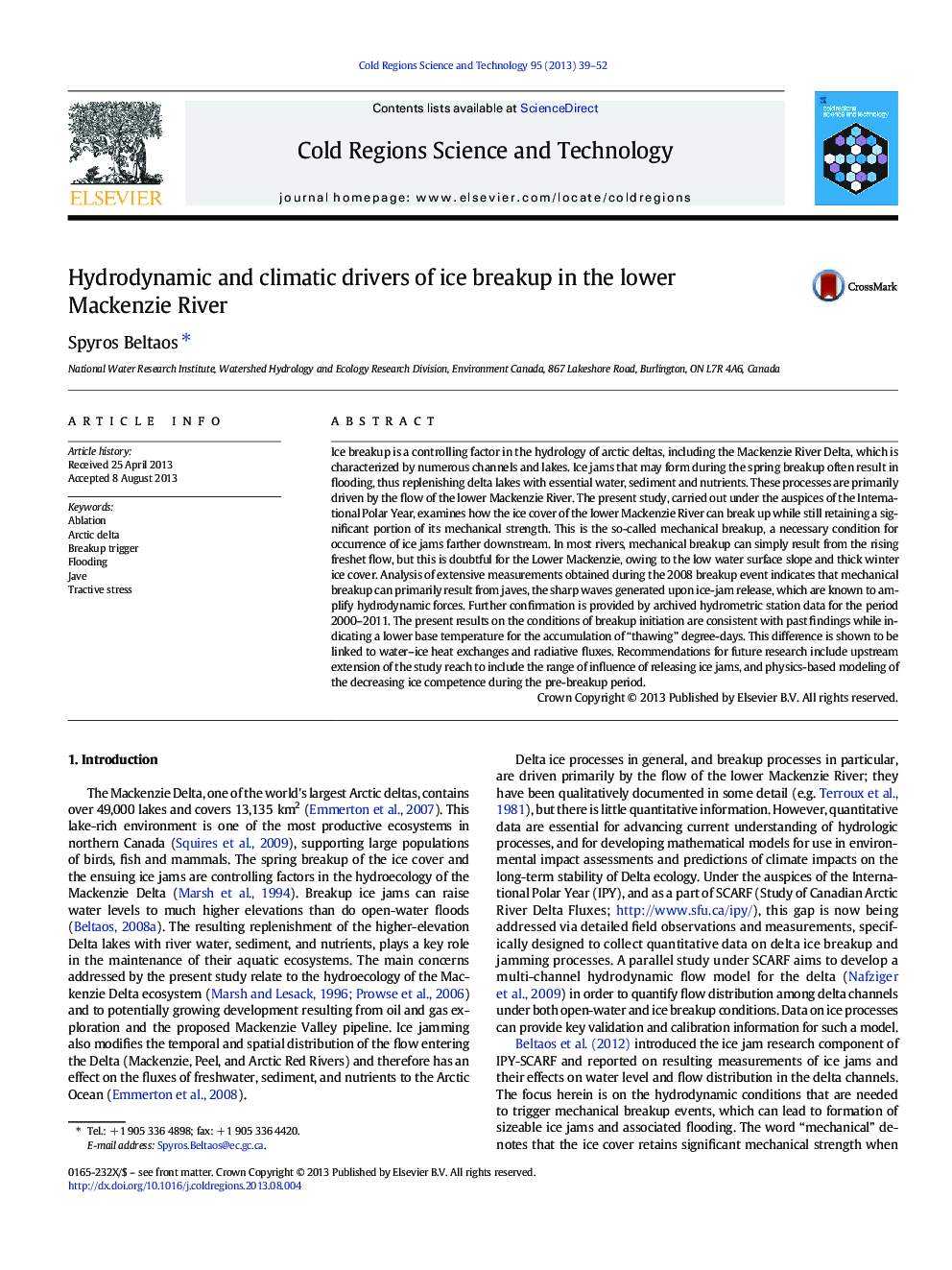| Article ID | Journal | Published Year | Pages | File Type |
|---|---|---|---|---|
| 6427002 | Cold Regions Science and Technology | 2013 | 14 Pages |
â¢Ice breakup and jamming processes are vital to Mackenzie Delta ecology.â¢Ice-jam formation and flooding controlled by Lower Mackenzie River.â¢Only javes can trigger dynamic breakup events.â¢Ice ablation begins at lower air temperatures than in more southern rivers.â¢Physics-based prediction of pre-breakup ice decay is the next challenge.
Ice breakup is a controlling factor in the hydrology of arctic deltas, including the Mackenzie River Delta, which is characterized by numerous channels and lakes. Ice jams that may form during the spring breakup often result in flooding, thus replenishing delta lakes with essential water, sediment and nutrients. These processes are primarily driven by the flow of the lower Mackenzie River. The present study, carried out under the auspices of the International Polar Year, examines how the ice cover of the lower Mackenzie River can break up while still retaining a significant portion of its mechanical strength. This is the so-called mechanical breakup, a necessary condition for occurrence of ice jams farther downstream. In most rivers, mechanical breakup can simply result from the rising freshet flow, but this is doubtful for the Lower Mackenzie, owing to the low water surface slope and thick winter ice cover. Analysis of extensive measurements obtained during the 2008 breakup event indicates that mechanical breakup can primarily result from javes, the sharp waves generated upon ice-jam release, which are known to amplify hydrodynamic forces. Further confirmation is provided by archived hydrometric station data for the period 2000-2011. The present results on the conditions of breakup initiation are consistent with past findings while indicating a lower base temperature for the accumulation of “thawing” degree-days. This difference is shown to be linked to water-ice heat exchanges and radiative fluxes. Recommendations for future research include upstream extension of the study reach to include the range of influence of releasing ice jams, and physics-based modeling of the decreasing ice competence during the pre-breakup period.
